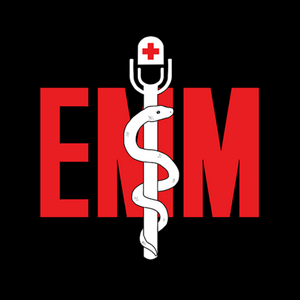Episode 959: The KLM Flight Disaster and Lessons in Healthcare Communication
Contributor: Taylor Lynch, MD Educational Pearls: The KLM Flight Disaster, also known as the Tenerife Airport Disaster, occurred on 27 March 1977. It involved the collision of two Boeing 747 passenger jets from KLM and Pan Am Airlines, resulting in 583 fatalities. What fell through the cracks to cause this incident? The captain of the KLM flight believed he had received clearance from air traffic control to take off, when in fact he had not. This captain was one of the most senior pilots in the organization, and the culture often saw senior pilots as infallible and not to be questioned. The co-pilot, who noticed improper communication resulting from power dynamics, did not assertively speak up. What lessons can be taken from the tragedy and applied to healthcare? Aviation and healthcare are both high-stakes industries that require extensive communication for the safety of passengers and patients. Within medicine, an inherent hierarchy exists, and it is crucial not to let this hierarchy and perceived power imbalance prevent people from speaking up. In healthcare, providers such as nurses, paramedics, and technicians may spend more time with patients and thus may notice warning signs earlier. It is imperative to foster a culture where they can speak up freely and without hesitation if something concerning is caught in a patient. When might mistakes happen most often? Hanna et al. found that radiological interpretation errors were more likely to occur later in shifts, peaking around the 10-to-12-hour mark. Leviatan et al. found that medication prescription errors were more likely to occur by physicians working on 2nd and 3rd consecutive shifts. Hendey et al. found medication ordering errors were higher on overnight and post-call shifts. Gatz et al. found that surgical procedural complication rates are higher during the last 4 hours of a 12-hour shift. In Short, Ends of shifts are when mistakes are most likely to occur. Overall takeaway? In a healthcare team, it is critical to look after each other regardless of years of experience or post-nominal letters, and speak up for patient safety. Making a special note that we may need to do so more towards the end of shifts, where we might not be at our sharpest. References Gatz JD, Gingold DB, Lemkin DL, Wilkerson RG. Association of Resident Shift Length with Procedural Complications. Journal of Emergency Medicine. 2021 Aug 1;61(2):189–97. Hanna TN, Lamoureux C, Krupinski EA, Weber S, Johnson JO. Effect of Shift, Schedule, and Volume on Interpretive Accuracy: A Retrospective Analysis of 2.9 Million Radiologic Examinations. Radiology. 2018 Apr;287(1):205–12. Hendey GW, Barth BE, Soliz T. Overnight and postcall errors in medication orders. Acad Emerg Med. 2005 Jul;12(7):629–34. Leviatan I, Oberman B, Zimlichman E, Stein GY. Associations of physicians’ prescribing experience, work hours, and workload with prescription errors. J Am Med Inform Assoc. 2021 Jun 12;28(6):1074–80. Summarized by Dan Orbidan, OMS2 | Edited by Dan Orbidan & Jorge Chalit, OMS4 Donate: https://emergencymedicalminute.org/donate/
